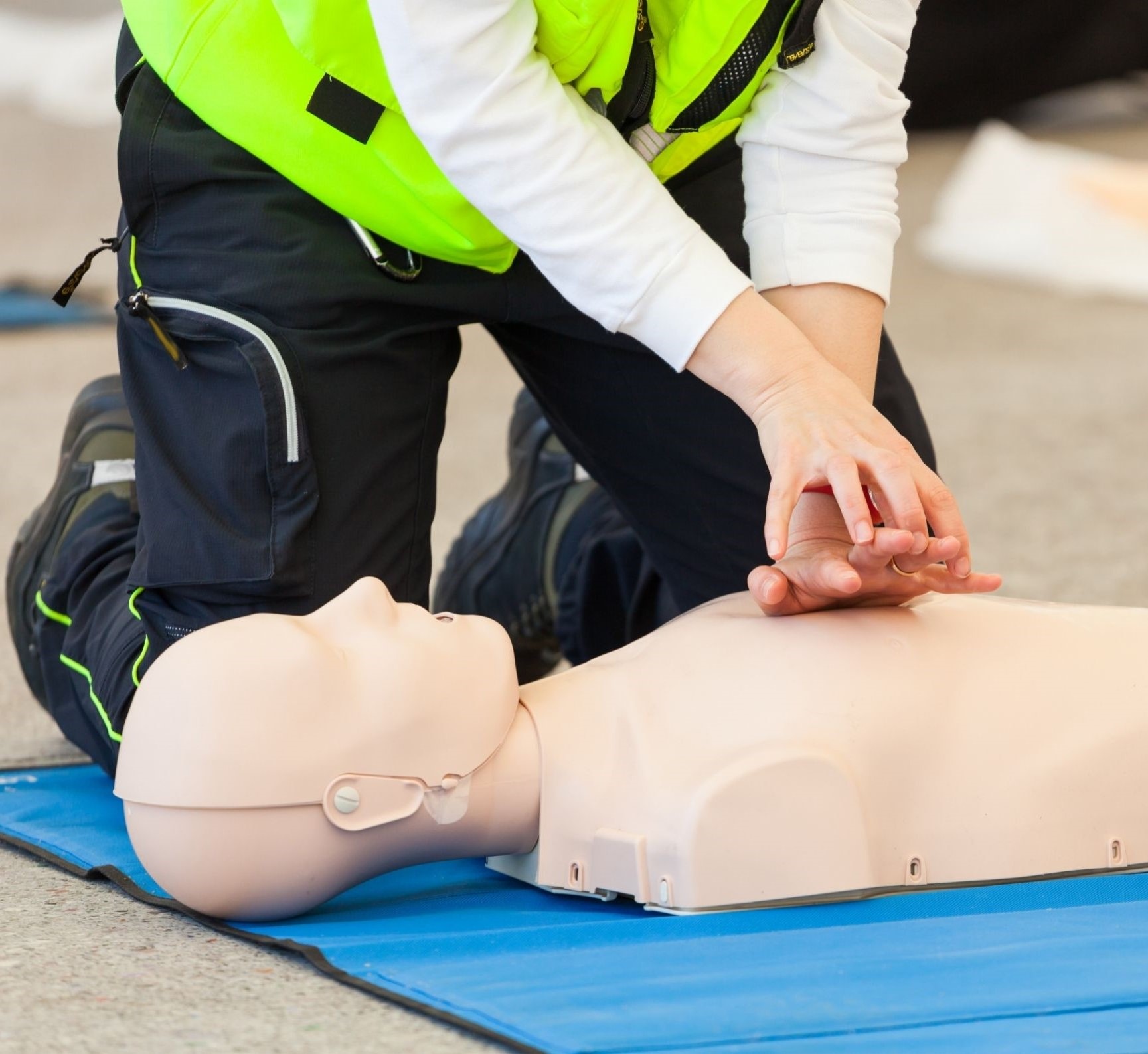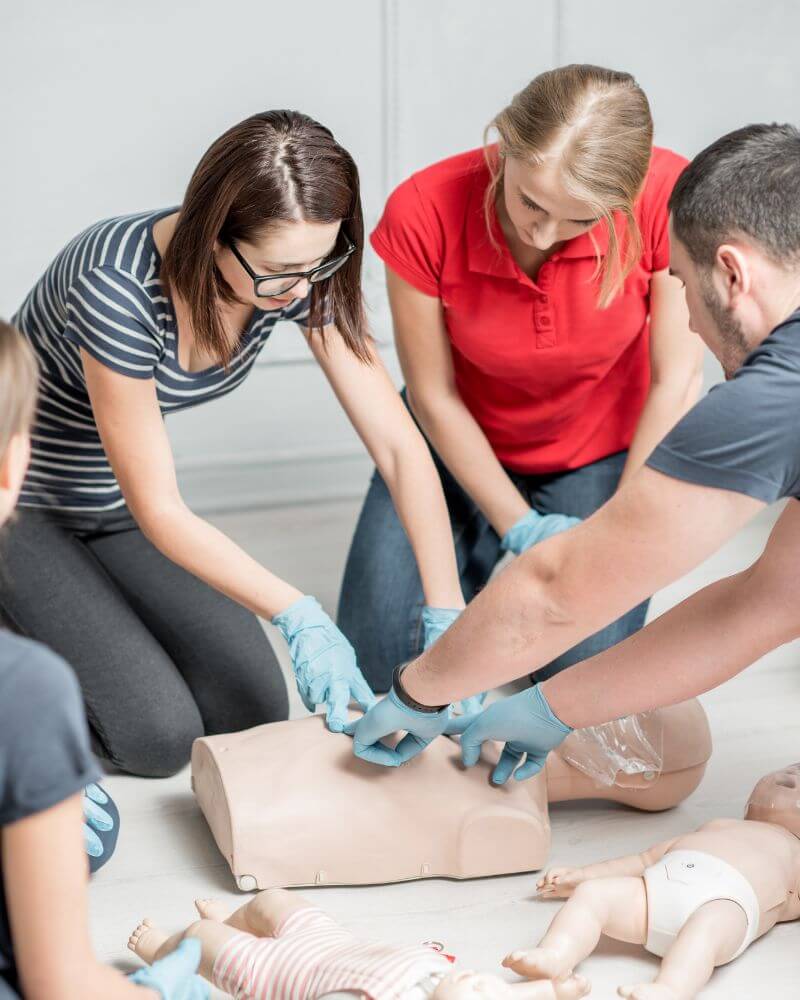Introduction
In our rapidly altering world, the importance of emergency treatment can not be understated. Whether in a corporate atmosphere, educational institution, or in your home, knowing exactly how to react efficiently during a clinical emergency situation can save lives. Nonetheless, with terrific duty comes the demand for recognizing the policies controling first aid methods. This write-up intends to offer a detailed summary of first aid policies that every carrier must understand. We will certainly explore various elements-- from crucial qualifications to the subtleties Hobart First Aid Course of mouth-to-mouth resuscitation training courses-- guaranteeing you leave geared up with understanding and confidence.
Table of Contents
Understanding Emergency treatment Regulations- 1.1 Importance of Emergency Treatment Training 1.2 Legal Ramifications of First Aid
- 2.1 Sorts of Emergency Treatment Courses 2.2 Selecting the Right Program for You
- 3.1 Comprehending mouth-to-mouth resuscitation Techniques 3.2 Value of CPR Certification
- 4.1 Benefits of Mixed Training 4.2 How to Locate an Integrated Course
- 5.1 Who Requirements a First Aid Certificate? 5.2 Credibility and Renewal of Certifications
- 6.1 National Safety and security Council (NSC) 6.2 American Red Cross Standards
- 7.1 OSHA Standards for Office Safety 7.2 Company Responsibilities in Emergency Treatment Training
- 8.1 Fundamental Steps in Emergency Response 8.2 Duty of a First Responder
- 9.1 Common Misconceptions concerning First Aid 9.2 Overcoming Barriers to Training
- 10.1 Virtual Learning Opportunities 10.2 Technologies in Emergency Treatment Equipment
Understanding Emergency treatment Regulations
Importance of Emergency treatment Training
First aid training is not just a valuable skill; it's a vital part of our social fabric that equips individuals to act decisively throughout emergencies.
- Life-Saving Skills: Recognizing standard emergency treatment strategies can dramatically increase survival prices in emergencies. Confidence Building: People learnt first aid typically feel more positive and prepared when faced with clinical situations.
Legal Ramifications of First Aid
Understanding the legal structure bordering emergency treatment is critical for any person supplying help during emergencies.
- Good Samaritan Laws: A lot of states have legislations safeguarding those that make help willingly from legal liability, as long as their activities are affordable and planned to help. Negligence Considerations: If a qualified company acts carelessly or fails to do necessary life-saving procedures, they can deal with lawful consequences.
First Aid Surges Overview
Types of Emergency treatment Courses
There are numerous sorts of first aid courses readily available, each tailored to meet various requirements:

- Basic Life Assistance (BLS): Ideal for healthcare specialists requiring advanced skills. Standard First Aid: Covers necessary skills ideal for laypersons and non-medical personnel. Advanced Cardiac Life Assistance (ACLS): Targets healthcare providers working with seriously ill patients.
Choosing the Right Course for You
When picking a training course, consider your goals and scenarios:
- Are you looking for qualification for work environment compliance? Do you need abilities certain to child care or elderly assistance?
Researching local carriers can assist improve your option based upon location and solutions offered.


CPR and Its Significance
Understanding CPR Techniques
Cardiopulmonary resuscitation (CPR) is just one of the most essential abilities learned in any first aid course:
- Compression Technique: Efficient chest compressions can maintain blood streaming to important organs till expert assistance arrives. Rescue Breaths: While less highlighted now due to brand-new guidelines, rescue breaths remain an indispensable component of typical mouth-to-mouth resuscitation training.
Importance of CPR Certification
Obtaining accreditation with acknowledged organizations guarantees proficiency in performing mouth-to-mouth resuscitation:
- Many employers require current accreditation as component of their safety and security protocols. It boosts total confidence when facing potential cardiac emergencies.
First Help and mouth-to-mouth resuscitation Course Integration
Benefits of Mixed Training
Taking an integrated emergency treatment and mouth-to-mouth resuscitation program provides numerous benefits:
- It enhances training by covering both locations simultaneously. Participants acquire detailed knowledge suitable throughout numerous scenarios.
How to Find an Integrated Course
Searching for incorporated training programs requires some critical preparation:
- Look for regional recreation center or health centers providing such courses. Online systems might also supply digital options tailored towards busy professionals.
First Aid Accreditation Requirements
Who Requirements an Emergency treatment Certificate?
Various industries demand certification from personnel:
- Educational institutions usually call for educators and coaches to hold valid certificates. Healthcare setups demand ongoing training amongst personnel members.
Validity and Revival of Certifications
Most accreditations have expiry dates:
- Regularly renewing qualifications makes certain that companies stay up-to-date with present practices.
Regulatory Bodies Governing First Aid
National Security Council (NSC)
The NSC plays a crucial duty in setting standards for safety training across the USA:
- They give sources, products, and support for both trainers and learners alike.
American Red Cross Standards
The American Red Cross uses extensive training programs lined up with national criteria:
- Their curriculum consists of hands-on practice, guaranteeing individuals develop sensible abilities together with academic knowledge.
Workplace Laws on First Aid
OSHA Standards for Work environment Safety
The Occupational Safety and Health Administration (OSHA) outlines assumptions concerning work environment precaution:
|Demand|Description|| -------------|-------------|| Accessibility|Companies need to ensure accessibility to adequate first-aid resources in all times|| Educated Personnel|Designated employees must be learnt fundamental emergency treatment|
Employer Obligations in Emergency treatment Training
Employers birth considerable duties worrying employee safety and security:
- Providing proper training sessions regularly assists minimize workplace injuries.
Emergency Action Protocols
Basic Action in Emergency Response
An efficient emergency action procedure can substantially enhance end results throughout situations:
Assess the circumstance safely. Call emergency situation services if needed. Provide required treatment till specialist assistance arrives.Role of a First Responder
First -responders play an invaluable role within emergency scenarios by delivering timely aid while waiting for sophisticated medical treatment:
- Their punctual action usually makes a considerable difference in between life and death scenarios.
Challenges in Implementing Emergency treatment Training
Common Misconceptions concerning First Aid
Misunderstandings surrounding emergency treatment can impede efficient feedbacks throughout emergencies:
Myth vs Truth Table
|Myth|Fact|| ----------------------------------|------------------------------------------|| Just healthcare experts need to carry out first aid|Anyone can learn standard techniques|| Making use of an AED is unsafe|AEDs are designed for public use|
Overcoming Obstacles to Training
Several barriers exist that might hamper people from pursuing emergency treatment training courses;
Key Barriers
- Time Restrictions: Busy timetables make it tough for many individuals to locate time for training sessions. Financial Limitations: Cost may hinder interested candidates from taking part; however, several companies use subsidized training courses or gives especially focused on giving monetary relief.
Future Fads in First Aid Training
Virtual Knowing Opportunities
With innovation developing quickly, on-line platforms have obtained appeal among learners looking for versatile choices;
- Real-time simulations allow individuals to involve proactively without requiring physical visibility at traditional locations; This technique enhances access while accommodating varied knowing styles!
Innovations in First-Aid Equipment
Emerging innovations are transforming exactly how we come close to first-aid prep work;
Examples Include
- Smart Plasters-- complete sensing units monitor healing progress! Mobile Applications-- supplying support based on user input pertaining to symptoms!
FAQs Regarding Understanding First-Aid Regulations
Q1: What is consisted of in a typical first-aid course?
A regular first-aid program covers topics such as wound treatment, fracture monitoring, shock therapy, choking treatments, together with CPR techniques tailored in the direction of numerous age groups!
Q2: Exactly how frequently do I need to renew my mouth-to-mouth resuscitation certification?
A lot of organizations recommend renewing your certification every two years; staying well-informed ensures reliable reactions throughout emergencies!
Q3: Can I take an on-line first-aid course?
Absolutely! Many trustworthy companies use online choices enabling students flexibility while keeping top quality requirements via interactive content!
Q4: Exists any age requirement for taking these courses?
Typically talking-- no! Children aged 10 or older can take part under parental guidance; however-- it's suggested that adults accompany them throughout lessons!
Q5: How do I pick between various carriers using similar courses?
Examine reviews/testimonials from previous attendees alongside examining accreditation standing prior to making decisions; this will certainly make sure high quality education supplied meets market standards!
Conclusion
In recap-- making sense outta guidelines surrounding crucial areas like 'first-aid' & & 'CPR' is fundamental not only professionally however directly as well! As seen throughout this article-- various variables add in the direction of ensuring appropriate responsiveness throughout medical emergencies consisting of understanding needed accreditations-- in addition to recognizing difficulties encountered whilst carrying out efficient programs within community/workplace settings alike! By spending time/resources into gaining efficiency through pertinent courses-- you'll be much better positioned than ever-- ought to fate provide its unpredictability knocking at your door! Always bear in mind-- the ability you possess today can possibly conserve someone else's tomorrow!